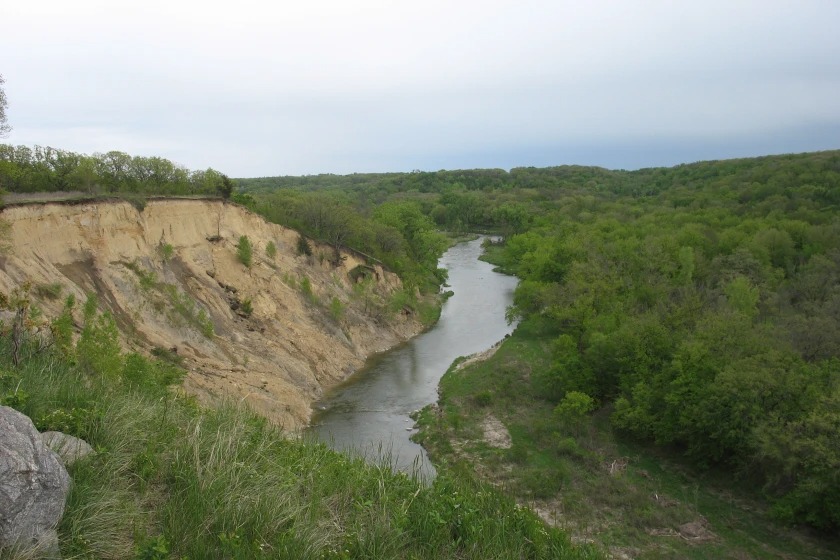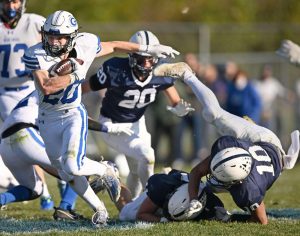
Upper Sioux Agency State Park session participants voice frustration over funding for park replacement
GRANITE FALLS, Minn. — Participants in a Minnesota Department of Natural Resources-led process to find replacement recreational opportunities for the loss of the Upper Sioux Agency State Park expressed frustration that the funding is woefully inadequate to do so.
Many also voiced feelings that the process has not generated the input needed because many believe the park process is a “done deal.”
“I don’t know the state is realistic in the investment back to southwestern Minnesota and the river,” Peg Furshong told representatives of the Minnesota DNR. She spoke Wednesday in Granite Falls at the second and final community input meeting on the transfer.
Furshong said she supports the transfer of the 1,300-acre park to the Upper Sioux Community but like many others at the meeting feels that the $4.5 million available for enhancing recreational opportunities in place of the park “is pretty insignificant.”
She pointed to land costs and her familiarity with the costs of developing recreational amenities as a representative on the Greater Minnesota Parks and Trails Commission. It would take funding in the range of $30 million to $35 million to replace what the Upper Sioux Agency State Park now offers, she said.
The Minnesota DNR is charged with preparing a report to the Legislature in January on the replacement for the park. Legislation approved this year by lead authors Sen. Mary Kunesh, DFL-New Brighton, and Rep. Zach Stephenson, DFL-Coon Rapids, calls for transferring the state park land to the Upper Sioux Community.
It allocates $5 million toward finding replacement recreational opportunities in the region.
There is about $4 million to $4.5 million of the amount that can be spent directly on enhancing opportunities, including land acquisition, DNR representatives told attendees at the meeting. The replacement effort is not an “acre per acre” replacement, according to Brooke Hacker, regional planner with the DNR in New Ulm.
At this point, the DNR has not contacted any landowners about potential land acquisitions. Much of the focus to date has been on identifying enhancements to area county and municipal parks, as well as proposals such as a proposed bicycle trail from Granite Falls to Wegdahl.
Laura Preus, parks and trails program manager with the DNR, said the department’s leadership has emphasized the importance of finding opportunities in the Minnesota River Valley and in proximity to the affected area.
Hiking, camping, river access and park enhancements have been among the most often cited desires by people who have participated in the process to date, according to Hacker and Darin Newman, a planner with the DNR. The process has mainly involved two public input meetings and an online survey. Some 159 comments have been recorded.
One meeting participant charged that the focus on enhancements to existing recreational sites is a “quick fix” to satisfy the legislation and ignores what is being lost.
Land acquisition “needs to be a high priority,” said meeting participant Terry Van der Pol. She and others said land acquisition should be undertaken before funds are spent on what some termed “collateral” opportunities, such as improvements to municipal and county parks.
Public participation has been limited because most people feel the transfer was accomplished legislatively without public participation or awareness, according to some of the meeting participants.
“I hear this all the time. What good does it do me to offer suggestions because, basically, it’s a done deal,” participant Greg Holmstrom said.
The 159 comments received so far are “such a small snapshot” of the people affected, participant Scott DeMuth said. He urged the DNR to do more active engagement in the community to get more participation and a broader perspective about what is desired.
He also pointed out that the funding is far short of what is needed, and that it will fall on the community to pursue additional funding if it is going to find more replacement opportunities. There is no guarantee that the DNR will remain committed to assisting, but he said the department’s long-term assistance could be critical in supporting a community effort.
John Berends, a member of Yellow Medicine County Board of Commissioners, also expressed his concerns that local governments do not want to be placed in the position of “wrestling” for the available dollars to enhance existing parks.
Preus said she and other DNR team members recognize the limits of the funding and are also grappling with how best to utilize what’s available. She said the DNR is looking for public comment on whether to focus the funds on one area or type of activity, or to fund a variety of enhancements.
“I think there are actually ideas that could be funded that could be meaningful,” said Preus. “They may not be as significant as one would hope, but we’re hoping this process leads to something of meaning.”
Information on the transfer and public input is available on the DNR website.
Related Articles
Premium Iowa Pork projects spring reopening of former HyLife plant
Soucheray: In this time of political loneliness, we surrender
Duluth judge to decide if COVID-19 safety measures violated murder suspect’s trial rights
Sturgeon stocking in Red Lake River marks new phase in recovery efforts
‘It wasn’t easy for us, but for some reason, I wasn’t afraid.’ On Veterans Day, a World War II veteran remembers


